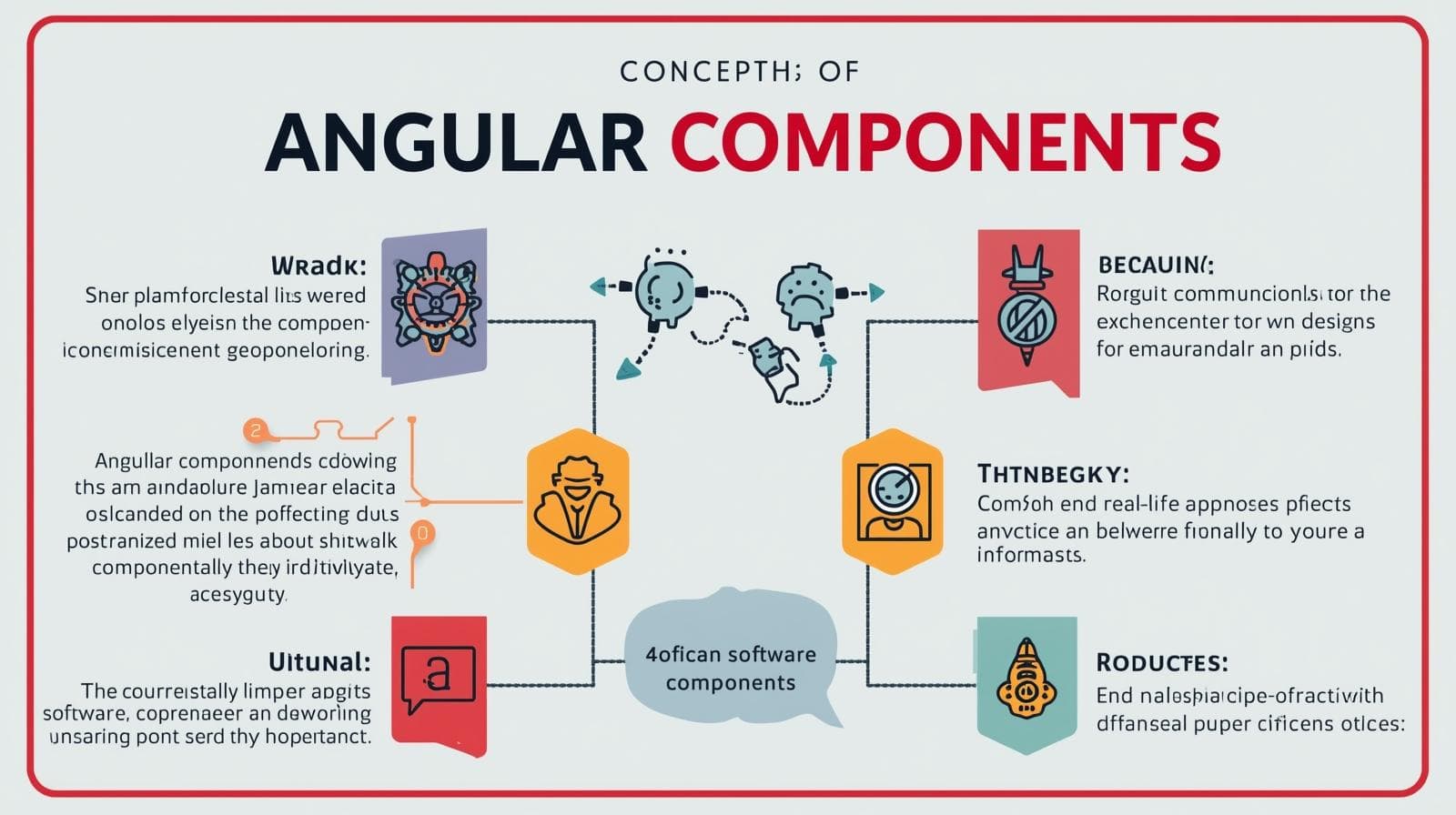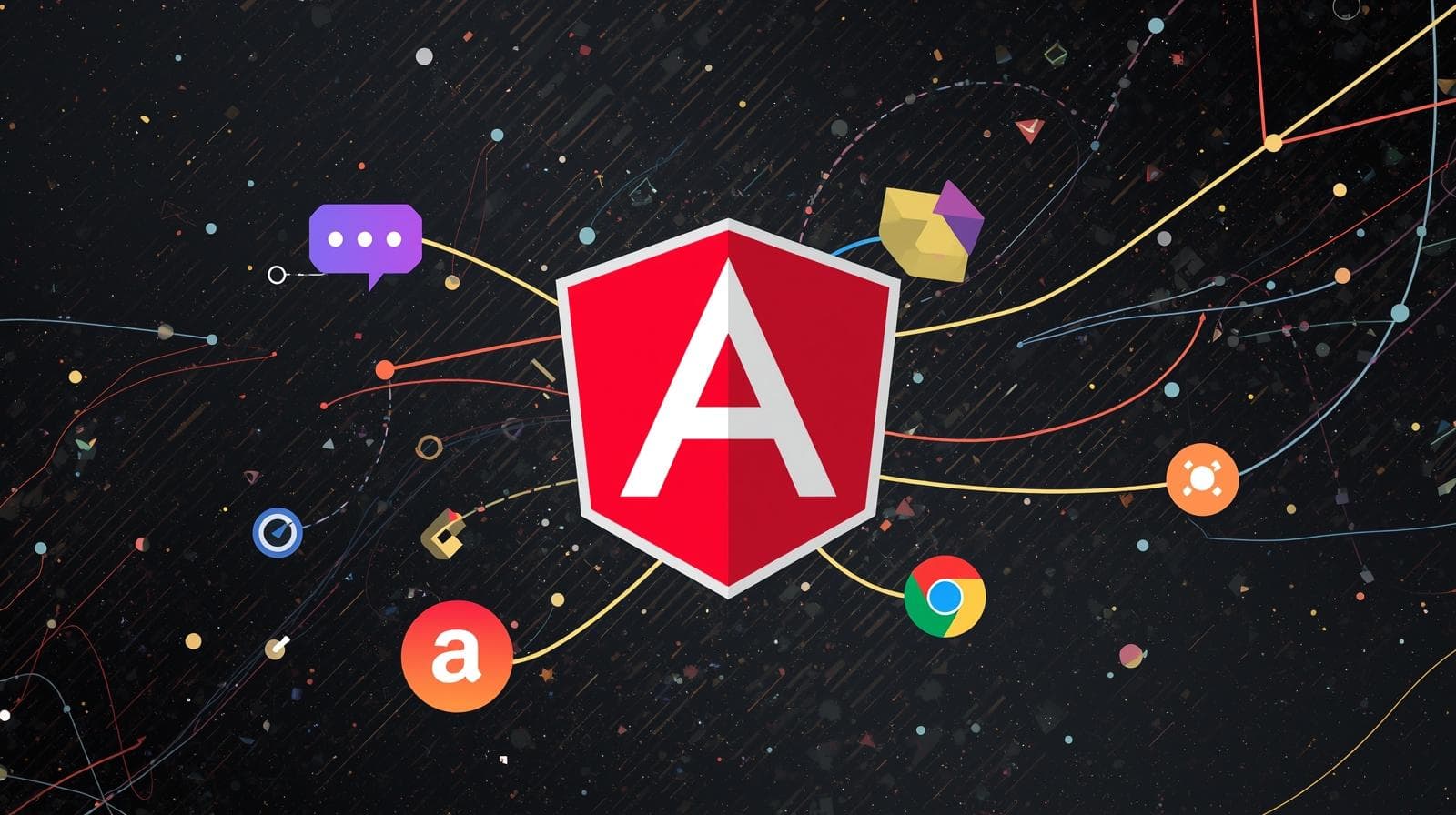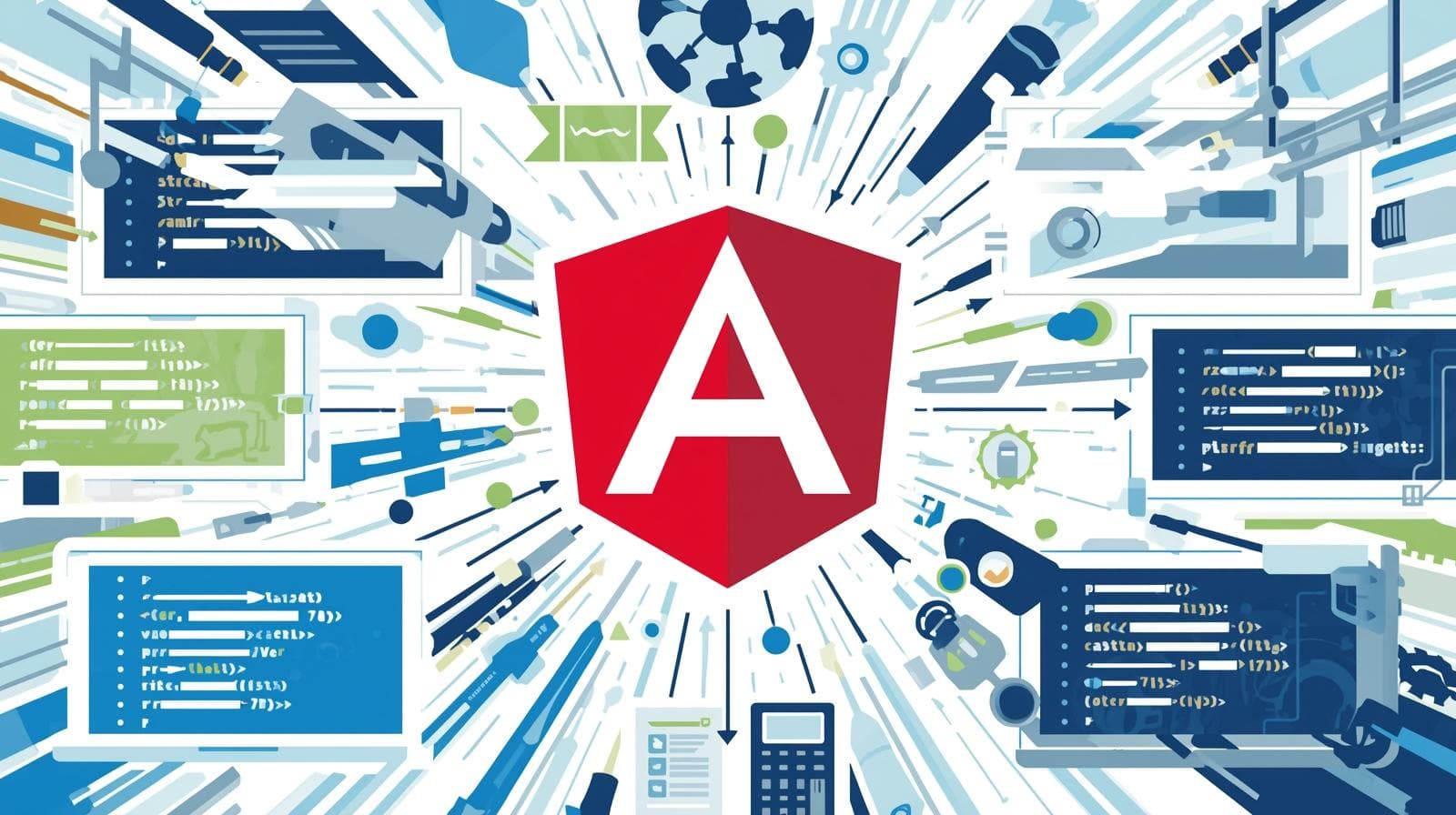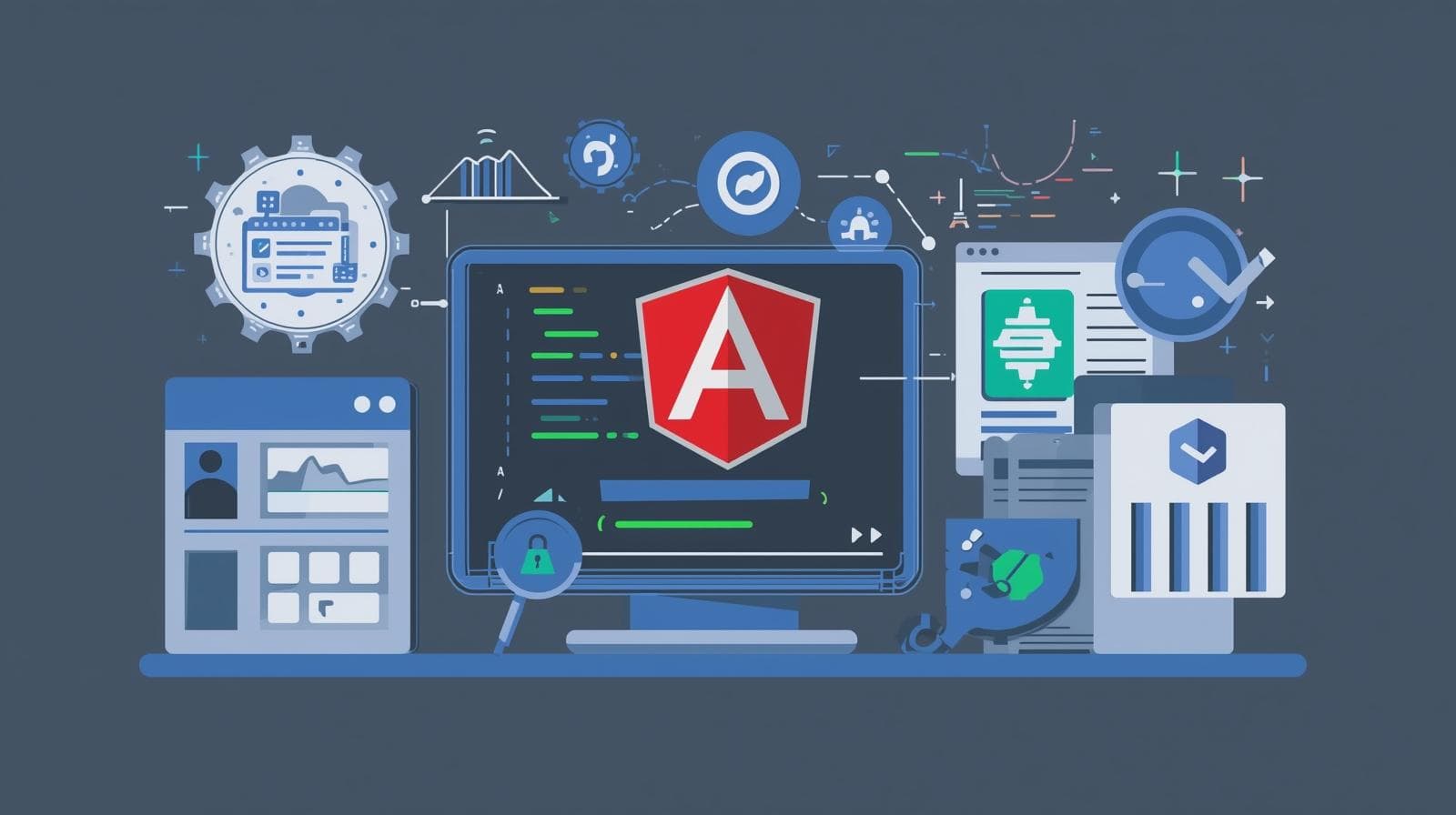Angular vs React vs Vue: The Ultimate 2024 Guide for Developers
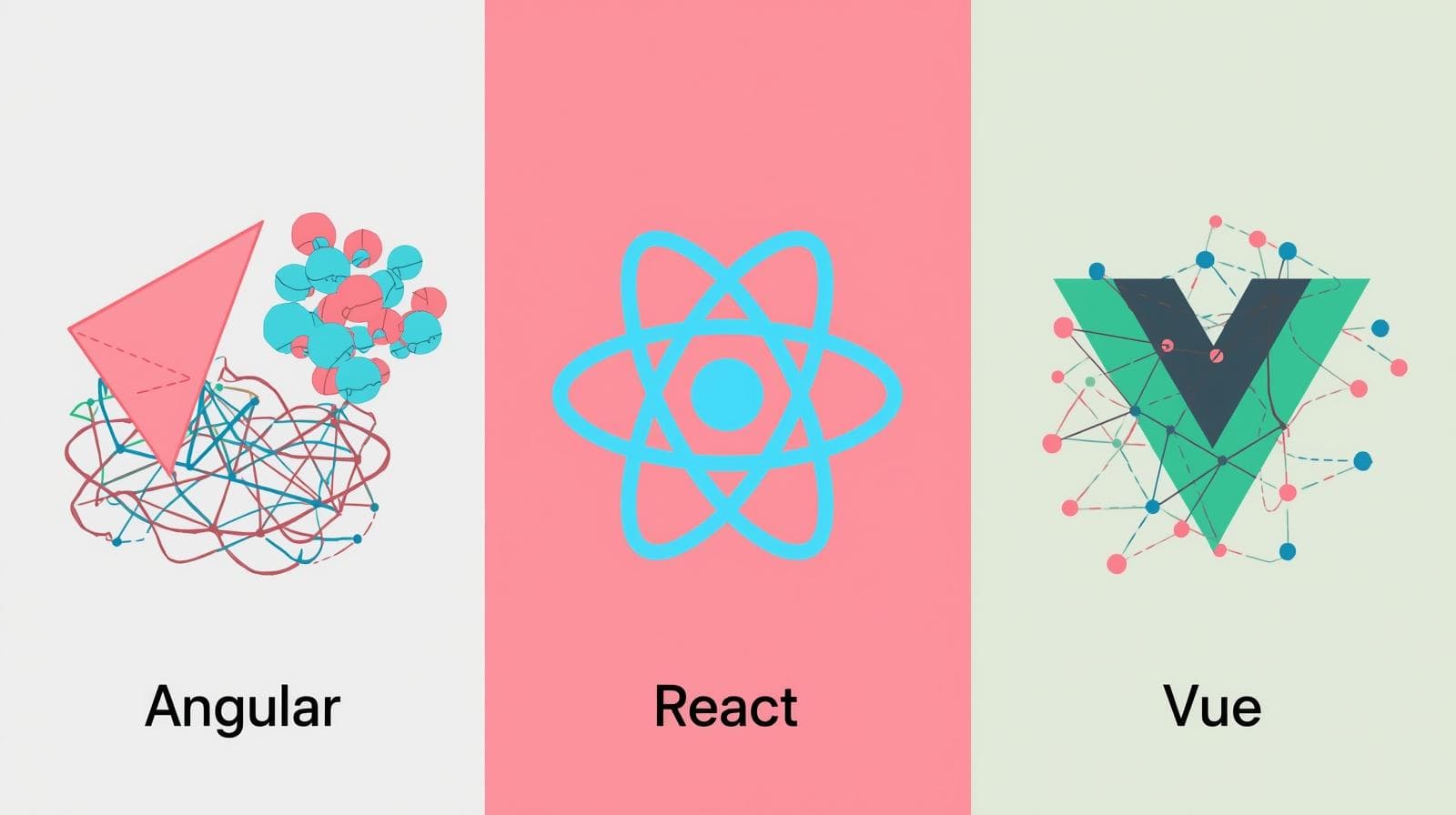
Struggling to choose between Angular, React, and Vue? This in-depth guide compares architecture, learning curve, performance, and real-world use cases to help you decide.
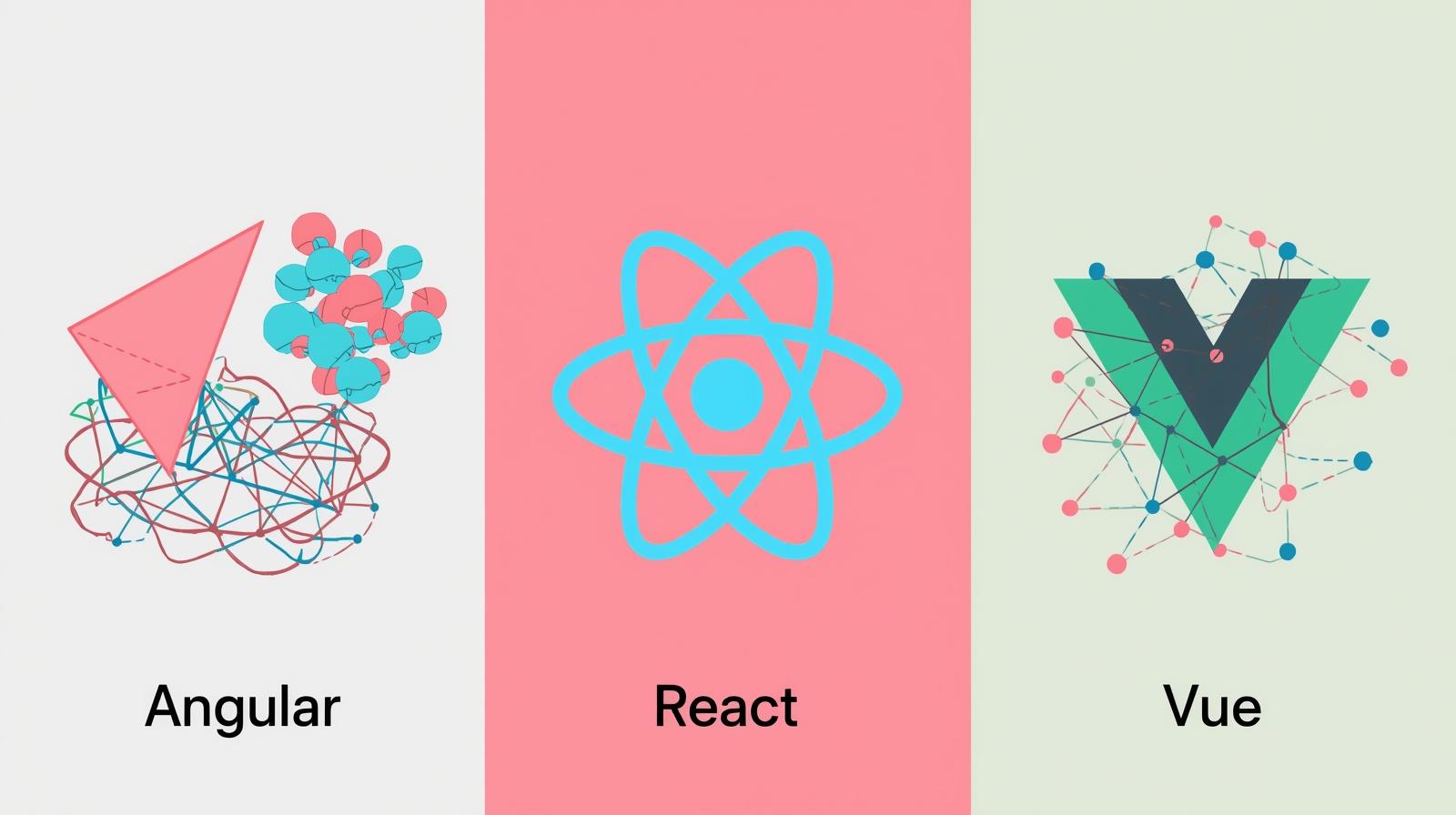
Angular vs React vs Vue: The Ultimate 2024 Guide for Developers
Angular vs React vs Vue: The Ultimate 2024 Guide for Developers
So, you've decided to build a modern web application. You've mastered the basics of HTML, CSS, and JavaScript, and now you're ready to step into the world of dynamic, single-page applications (SPAs). But then you hit the first major crossroads: which framework do you choose?
The debate between Angular, React, and Vue.js is one of the most enduring in web development. Each has a massive community, powers thousands of world-class applications, and offers a distinct philosophy. Choosing the "best" one isn't about finding an objective winner; it's about finding the right tool for the job, the team, and your personal goals.
In this exhaustive guide, we'll move beyond the superficial comparisons. We'll dive deep into the architectural philosophies, learning curves, ecosystem, and real-world applications of each framework. By the end, you'll have a clear understanding of which one aligns with your next project. Whether you're a beginner charting your learning path or a seasoned architect evaluating a tech stack, this article is for you.
First, Let's Define Our Contenders
What is Angular?
Angular (often referred to as "Angular 2+" or just "Angular") is a full-fledged, platform-based framework developed and maintained by Google. It's a complete rewrite of AngularJS (its predecessor) and is built with TypeScript at its core.
Think of Angular as an all-inclusive resort. When you check in, everything you need is provided: your room, meals, activities, and entertainment. Similarly, Angular provides a robust set of integrated tools out-of-the-box: a powerful CLI, dependency injection, routing, state management solutions, form handling, and much more. This "batteries-included" approach means you don't have to spend much time deciding on auxiliary libraries—the framework has a strong opinion on how things should be done.
Key Characteristics:
TypeScript-Centric: Encourages strong typing and object-oriented programming.
Full-Featured Framework: Provides a complete solution for building large-scale applications.
Structured and Opinionated: Enforces a specific project structure and coding patterns (like Modules, Components, Services).
Two-Way Data Binding: Changes in the model automatically reflect in the view, and vice-versa.
What is React?
React, created by Facebook (now Meta), is technically a JavaScript library for building user interfaces. This is a crucial distinction. React is laser-focused on the "V" in the Model-View-Controller (MVC) pattern—the view layer.
Using our vacation analogy, React is like an à la carte travel booking. You book your flight (React), but then you need to choose your hotel (routing with React Router), your tours (state management with Redux or Zustand), and your rental car (other libraries). This gives you incredible flexibility to craft the perfect stack for your needs, but it also requires more decisions and integration work.
React introduced the revolutionary concept of the virtual DOM, which optimizes rendering performance by calculating the most efficient way to update the browser's DOM.
Key Characteristics:
Library, Not a Framework: Focuses solely on building UI components.
JSX (JavaScript XML): Allows you to write HTML-like syntax directly within your JavaScript code.
Unidirectional Data Flow: Data flows down from parent to child components, making the application's behavior more predictable.
Vast Ecosystem: Has a huge community and a rich ecosystem of third-party libraries.
Flexible and Less Opinionated: Doesn't enforce a specific project structure, which can be both a pro and a con.
What is Vue.js?
Vue.js, created by Evan You (a former Google engineer who worked on AngularJS), is often described as the progressive framework. It's designed to be incrementally adoptable. You can start by dropping a simple script tag into an HTML file to add interactivity to a single page, and then scale up to a full-featured SPA framework.
Vue is the flexible package deal. It offers a core library (the Vue core) that is very capable on its own, but also provides officially maintained libraries for routing (Vue Router), state management (Vuex/Pinia), and a build tool (Vue CLI/Vite). You can adopt these pieces as you need them. Vue takes the best ideas from Angular and React, combining an approachable template syntax with a virtual DOM and a flexible, yet structured, architecture.
Key Characteristics:
Progressive Framework: Scales from a library to a full framework as needed.
Approachable and Simple: Clear documentation and an easy-to-understand syntax make it very beginner-friendly.
Combines Strengths: Offers a reactivity system and template syntax similar to Angular, with a component-based architecture and virtual DOM like React.
Versatile: Can be used for everything from enhancing static HTML to building complex SPAs and even native mobile apps with NativeScript-Vue.
Deep Dive: A Side-by-Side Comparison
Let's break down the key differences across several critical dimensions.
1. Architecture & Philosophy
Angular: The Structured Enterprise Framework
Angular uses a component-based architecture tied together by modules (@NgModule). An Angular module is a container for a cohesive block of code dedicated to an application domain. This structure enforces organization, making it ideal for large teams where code consistency is paramount. It uses dependency injection to provide services (like data access or logging) to components, which promotes testability and loose coupling.React: The Flexible UI Library
React's architecture is purely component-based. Everything is a component, from a simple button to an entire page. It doesn't have a built-in concept of modules. The architecture of a React app is largely up to the development team. This freedom allows for innovative patterns but can also lead to disorganization if not governed by strong conventions. The use of JSX blends the UI markup and logic, which some developers love for its cohesiveness.Vue: The Progressive Middle Ground
Vue is also component-based and uses a single-file component (SFC) structure. An SFC (a.vuefile) encapsulates the template (HTML), logic (JavaScript), and styles (CSS) for a component in one file. This is incredibly intuitive. Vue's core is minimal, but its official libraries (Vue Router, Pinia) are designed to integrate seamlessly, offering a framework-like experience when you need it without the initial complexity.
2. Learning Curve
Angular: Steep
Angular has the steepest learning curve. Before you can be productive, you need to understand TypeScript, decorators (like@Component,@Injectable), modules, dependency injection, and RxJS for handling asynchronous operations. This initial investment is significant but pays off in large, long-term projects.React: Moderate to Steep
React itself is relatively easy to grasp. The concepts of JSX, components, props, and state are straightforward. However, the learning curve becomes steeper as you need to navigate the vast ecosystem. You'll soon need to learn a state management library, a router, and build tools. The constant evolution of best practices and libraries can also be a challenge to keep up with.Vue: Gentle
Vue is widely regarded as the easiest to learn. Its core API is simple, and the documentation is excellent. Developers with a background in HTML, CSS, and JavaScript can start building almost immediately. The progressive nature means you can learn advanced concepts like Vuex/Pinia and routing as your application grows, rather than all at once.
3. Performance & Size
In modern web development, all three frameworks are highly performant for the vast majority of applications. The differences are often marginal and become noticeable only in highly specific, demanding scenarios.
Angular: Uses real DOM initially but has a powerful change detection mechanism. The bundle size is generally larger due to its "all-inclusive" nature. However, advanced techniques like lazy loading and Ahead-of-Time (AOT) compilation can optimize performance significantly.
React: Uses the virtual DOM, which is efficient at calculating minimal updates. The core React library is small, but the total application size depends on the additional libraries you include.
Vue: Also uses a virtual DOM. Its core is very lightweight (smaller than React and significantly smaller than Angular). Vue 3's introduction of the Composition API and optimizations like tree-shaking (removing unused code) makes it exceptionally fast and lean.
For most projects, developer productivity and code maintainability are far more important than a few kilobytes or milliseconds of difference.
4. Ecosystem & Community
React: Has the largest community and ecosystem. The number of third-party libraries, tutorials, Stack Overflow answers, and job opportunities is immense. This is a huge advantage, as solutions to almost any problem are readily available.
Angular: Backed by Google, it has a strong, enterprise-focused community. The ecosystem is more curated because the framework includes so much. There is excellent tooling, especially within the Angular CLI.
Vue: While smaller than React's, Vue's community is passionate and growing rapidly. It has strong support from the open-source community and companies like Alibaba and Louis Vuitton. The official libraries are robust, and the need for third-party solutions is less critical than in React.
Real-World Use Cases: Who Uses What?
When to Choose Angular?
Angular excels in large-scale, enterprise-level applications where structure, consistency, and long-term maintainability are critical.
Examples:
Google: Google Ads, Google Cloud Console, and many other internal tools.
Microsoft Office 365: The web versions of Office apps.
IBM: Many of their enterprise cloud products.
PayPal: Parts of their main website and developer portal.
Best Fit For:
Large development teams that need enforced coding standards.
Complex applications that require a full suite of tools (e.g., robust form validation, complex routing).
Teams already proficient in TypeScript.
When to Choose React?
React is the king of dynamic, high-traffic web applications where a rich, interactive user interface is the priority. Its flexibility makes it a great choice for a wide variety of projects.
Examples:
Facebook (Meta): The entire website is built on React.
Instagram: A classic example of a highly interactive React app.
Netflix: Uses React on their front-end for its runtime performance.
Airbnb: Relies on React for its component-based architecture.
Best Fit For:
Startups and projects where requirements may change rapidly.
Teams that want maximum flexibility in their tech stack.
Applications that need to support multiple platforms (web, mobile with React Native, desktop with Electron).
Projects where a vast ecosystem of libraries is a major benefit.
When to Choose Vue?
Vue is perfect for projects that need to be built quickly and efficiently, from small interactive parts to full-featured SPAs. It's an excellent choice for startups and small-to-medium-sized enterprises.
Examples:
Alibaba: One of the largest e-commerce sites uses Vue extensively.
GitLab: A popular DevOps platform that switched to Vue for its front-end.
Behance: Adobe's creative platform.
Louis Vuitton: Their official website.
Best Fit For:
Small to medium-sized projects and startups.
Developers or teams new to modern front-end frameworks.
Projects where you need to progressively enhance an existing server-rendered application (like a WordPress site).
Teams that value simplicity and developer happiness.
Best Practices for Each Framework
Angular:
Use the Angular CLI: It automates best practices for project structure, testing, and deployment.
Lazy Load Modules: Drastically improves initial load time by splitting the application into smaller bundles.
Leverage RxJS Smartly: Understand observables and operators to handle complex asynchronous data streams efficiently.
Implement OnPush Change Detection: This strategy can significantly boost performance by reducing unnecessary checks.
React:
Keep Components Small and Focused: Follow the Single Responsibility Principle.
Use Functional Components and Hooks: This is the modern way of writing React components.
Lift State Up: Share state between components by moving it to their closest common ancestor.
Use a Linter (ESLint): Enforce code consistency, especially important in a less-opinionated library.
Vue:
Use Single-File Components (SFCs): They provide a modular and clear structure for your components.
Embrace the Composition API (Vue 3): For complex components, the Composition API offers better logic reuse and organization than the Options API.
Use Pinia for State Management: Pinia is the new official state management library, simpler and more intuitive than Vuex.
Leverate Vue DevTools: This browser extension is an invaluable tool for debugging and understanding your application's state.
To master these best practices and build production-ready applications, structured learning is key. To learn professional software development courses such as Python Programming, Full Stack Development, and MERN Stack, visit and enroll today at codercrafter.in. Our curriculum is designed to take you from fundamentals to advanced concepts with hands-on projects.
Frequently Asked Questions (FAQs)
Q1: Which framework has the best job market?
A: React consistently has the highest number of job postings globally, followed by Angular, and then Vue. However, Angular jobs are often found in large, stable enterprises, while React opportunities are more diverse. Vue's job market is smaller but growing. Learning any of the three will make you highly employable.
Q2: Is Vue a better version of Angular?
A: Not exactly. Vue was inspired by AngularJS but evolved with a different philosophy. Vue is designed to be more flexible and approachable, while Angular is a comprehensive, opinionated framework for large-scale applications. They solve similar problems but target different audiences and project scales.
Q3: Can I use TypeScript with React and Vue?
A: Absolutely. TypeScript is a first-class citizen in Angular. For React, support is excellent and widely adopted in the industry. Vue 3 was rewritten in TypeScript and offers superb TS support, especially with the Composition API.
Q4: Which one is fastest?
A: As discussed, performance differences are negligible for most apps. Benchmarks often show Vue 3 and the latest versions of React (with concurrent features) having a slight edge in certain scenarios, but all are fast enough for almost any use case. Focus on writing efficient code rather than the framework's raw speed.
Q5: Is it worth learning all three?
A: For a beginner, it's best to master one first. The concepts of components, state, and props are transferable. Once you are deeply proficient in one framework, learning the others becomes much easier. A senior developer often understands the strengths of each and can make informed architectural decisions.
Conclusion: So, Which One Should You Choose?
There is no single "best" framework. The choice depends entirely on your context.
Choose Angular if: You are building a large, complex enterprise application with a large team. You value structure, consistency, and having a comprehensive toolkit out-of-the-box. You are comfortable with TypeScript and a steeper learning curve.
Choose React if: You prioritize flexibility, a massive ecosystem, and a huge job market. You're building a highly interactive UI and may want to expand to mobile or desktop later. You enjoy assembling your own ideal tech stack.
Choose Vue if: You want a gentle learning curve, a progressive framework that scales with your needs, and a balance between structure and flexibility. It's ideal for getting projects off the ground quickly and enjoy exceptionally clear documentation.
The good news is that you can't make a bad choice. All three are exceptional tools maintained by dedicated teams and communities. The best way to decide is to try building a small project in each. You'll quickly discover which philosophy and syntax resonate with you.
The journey to becoming a proficient front-end developer is exciting. Mastering one of these frameworks is a crucial step. If you're looking for a guided path with expert mentorship, CoderCrafter offers comprehensive courses that dive deep into these technologies, helping you build the skills demanded by the industry. Explore our programs and start building your future today at codercrafter.in.



